



Sri Lanka is one country that has a rich and diverse cultural heritage. This unique culture contributes to Sri Lanka’s identity. The culture of Sri Lanka includes many customs and
rituals that date back more than 2000 years. These traditions were passed down from one generation to the next. One of the most popular features of Sri Lankan culture are its
colorful festivals. This is also a major tourist attraction. The shaping of Sri Lankan culture, traditions and religion is a key factor,
The use of art, architecture and sculptures is a common feature of Sri Lankan culture. Many people believe that Sri Lanka has an older culture. This is evidently due to the influence
of the major religions in the country, such as Islam, Buddhism, Hinduism and Hinduism. The Sri Lankan way to live is simple, simple, and full of happiness. This is why Sri Lankans
are able to appreciate the simple things in life like nature.
The culture’s main feature is its Indian and European influences. Because most Sri Lankan kings were married to Indian princesses, they integrated Indian culture into theirs while
still maintaining the Sri Lankan identity. European influences were a result from invasions by the Portuguese, Dutch, and then finally the British. The culture is known for its
hospitality, which makes Sri Lankans one the friendliest nations in the world
The rich mix of different cultural patterns, both native and derived from trade, religions, and western colonization has created Sri Lankan culture. Today, Sri Lanka’s cultural patterns
reflect the long-lasting impact of a variety of cultures.
The introduction of Buddhism more than 2300 years ago has had a significant impact on the culture. However, this does not negate the influence of Hinduism and Zoroastrianism.
Some of these influences are stil present in the traditions and rituals.
While other countries were proud of their military prowess in the world, the Sri Lankan society adopted a rational religious philosophy that emphasized tolerance. Buddhism in Sri
Lanka, as it was developed, was not a state religion. It was also rich in philosophical content that allowed other breezes to flow in. The country’s proximity to South India meant that
Hinduism was more prevalent in Sri Lanka, but this did not reduce the acceptance of Buddhism

Anuradhapura is the northernmost town of the cultural triangle in Sri Lanka. It is also one of the most significant cultural places on the island, dating back to the 3 rd centuries BC. Anuradhapura has been a UNESCO World Heritage Site since 1982. Anuradhapura contains hundreds of temples, palaces and stone sculptures. It is therefore a popular stop on most cultural tours to Sri Lanka. In the central zone of Sri Lanka, the city was founded by Walagambahu, the first king from Sri Lanka.

The second kingdom of Sri Lanka is located to the east of the Cultural Triangle. It was established in the Anuradhapura era. Although the Polonnaruwa legacy lasted only two centuries, it is evident that it was a dynasty that will not be forgotten. The Museum of the Central Cultural Fund has a visitor centre that displays the archaeology from Polonnaruwa. It was King Vijayabahu |, who defeated the Chola invaders and returned its land after 52 years. Vijayabahu has devoted his long reign towards the restoration of the country. Polonnaruwa, however, is largely King Parakramabahu's city. He constructed walls to surround the city, and strengthened the fortifications in the inner city. After he merged and expanded three of the Polonnaruwa tanks, he built the Parakramabahu Tank Polonnaruwa, with its stunning architecture from both Buddhist and Hindu cultures, is an extraordinary place. You can visit many incredible sites, including the Tivanka Image House, Lankathilaka, Gal Viharaya and Vatadageya.
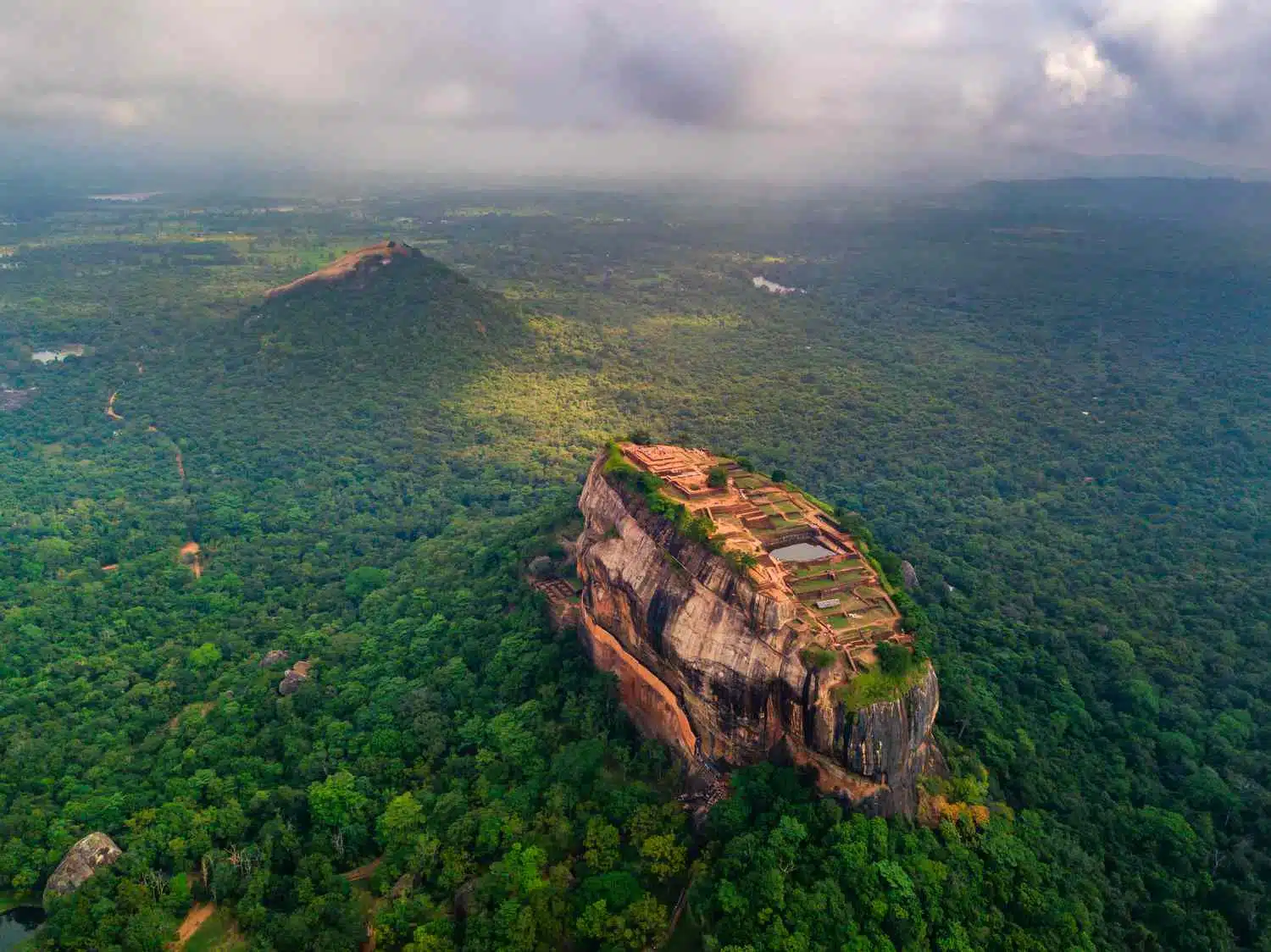
Sigiriya means “Lion Rock" after the entrance to the rock fortress, which was in form of a recumbent Lion whose remains could still be seen at the palace’s entrance. It was indeed a palace, as it served for about a decade-and-a half as the political center of Sri Lanka. Sigiriya is one of the most beautiful and well-preserved cities in South and Southeast Asia that survived the Christian era. Sigiriya is a landmark in Asia's history of urbanism. This is due to its amazing surroundings, its design and concept, and the high level of preservation. The urban form of Sigiriya is composed of a series central environs. The outer moat, which has not been explored fully, seems to form an appropriately geometrical rectangle. The grand Sigiriya rock is the center of these successive environs. The city plan is a rectangular shape that extends almost 3km east to west and 1km north to south. Many people who visit Sigiriya think that the urban centre only reveals Kashyapan architectural characteristics (C.5th Century AD), but archaeological evidence shows that Sigiriya has both pre- and post-Kashyapan phases. It has up to ten phases

Dambulla is part of the Cultural Triangle of Sri Lanka. Five caves made of living rock and decorated with sculptures and murals are the most significant heritage. Pre-Brahmi inscriptions dating back to the third century BC, and murals from the eighteenth centuries, show human activity over a long time. This site was designated a World Heritage Site by UNESCO in 1991. The Dambulla Project, Central Cultural Fund, was responsible for mural conservation from 1982 to 1998. Dambulla Project, which is the only research center for murals in Sri Lanka and headquarters for mural conservation, maintains Sri Lanka's only mural museum. This Project is also responsible for mural conservation of the surrounding temples. It is located at Dambulla Cave Temple.

In Kandy, the sacred tooth relics of Lord Buddha are kept in a temple called the Sri DaladaMaligawa. This temple is one of the most revered temples in the Buddhist world. Tradition dictated that the sacred tooth relic be kept in the city where the King chose to live. According to ancient scripts, Kandy was Sri Lanka's last capital Kandy, surrounded by forests and partially by the Mahaveli meandering river, was a major urban center from the 15th through the 19th centuries. The artificial lake, called the Milky Ocean and the royal palace complex, as well as four shrines, namely Natha, Vishnu and Katharagama, add to the city’s beautiful aesthetics. The famous monastic structures of the Malvatta or AsgiriyaViharas are also worth mentioning. Even if they are only for a brief visit, regular visitors to the city love it. Without mentioning the most sought-after event in Kandy, justice would not be done. The Tooth Relic Shrine annual pageant, also known as the "Daladaperahera” among locals, is an attraction that is worth visiting for local and international tourists. It is held in July and August. The Central Cultural Fund plans to turn the Queens Chamber within the royal palace complex into an exhibition. The suburbs are home to the Gadaladeniya and Lankathilaka temples, as well as the Ambekke Devalaya shrines. These shrines have historic and archaeological significance. It is worth visiting the University of Peradeniya, and Royal Botanical Gardens.

Galle is a town located in the South-West region of Sri Lanka. Archaeological research conducted within the heritage zone has revealed that the area contains archaeological remains from the historic age as well as sites of colonial times. Historical and archaeological evidence show that Galle harbour was a trading port since the Christian era. It was where both east and west ships sailed. Galle was marked on a map by Ptolemy in the 139 AC. This is a strong evidence that Galle was a prominent trade centre. In 1588, the Portuguese built the Galle Fort. Since then, the Dutch and English have directly attacked this area including the Galle Fort. The Europeans began to influence the lives of the inhabitants of this area. In all aspects of culture, including architecture, art and language, as well as dress and religion, there was a lot of Western influence. It is still possible to visit the Galle Fort, which is the centralised heritage site. This site was designated a World Heritage Site by UNESCO in 1996. The Central Cultural Fund conducts marine archaeological research. Its centred around the Galle harbour, the Oceanic Museum displays the maritime heritage of the heritage site and also the cultural heritage. The Central Cultural Fund also manages heritage in many places within the zone.

The North of the Island Chola’s rule lasted 52 years (1017-1070). King Vijayabahu was there to strengthen the South. The Ramba Monastic Complex was where the king built his army for fifteen years. In 1070, he overthrew the Chola’s of Polonnaruwa. Historical documents also state that King Parakramabahu the great spent some time at Ramba Viharaya with his family. Here was even the sacred tooth relic from Lord Buddha. Buddhist monks from all over the island would come together to meditate and pray. The Central Cultural Fund has made excavations at the site that reveal that the complex was the subject of foreign relations since the 12th century. The monastic complex's location beside the Walawe River made it a center for economic development and trade. The Anuradhapura period's Central Cultural Fund discovered many rich archaeological finds at Ramaba.

The Southern Province of Sri Lanka was once known as Ruhuna. It is home to a number of heritage sites that have made an impact on Sri Lanka's past. Mahagama, the capital of ancient Sri Lanka in the Southern region (now Thissamaharama), dates back to as far as Anuradhapura. The ancient Ruhuna, with its harbours, was an important link on the so- called Silk Route of the Sea. According to the chronicle in which it is recorded, King Mahanaga established his kingdom and founded the city Mahagama in the 3rd Century BC. It rises from a flat plateau and is now called Akurugoda

Matara is a heritage area located near the Southern coast in Sri Lanka. Here are numerous archaeological and historic heritage sites that reflect the historical age. Matara town is particularly prominent during the colonial era. Matara was a trading centre for elephants and cinnamon when it was initially ruled by the Portuguese. In Matara, a Dutch fortress was constructed during this period. The English finally took control of the fortress, as well as other architectural constructions such churches, fortresses and houses. These structures are now part of the colonial legacy. This heritage zone contains several Buddhist monasteries with murals that represent the southern painting tradition in Sri Lanka.

Yapahuwa is a natural hillock located in the North-Western area. It may be considered an archaeological heritage site. Archaeological excavations on the Eastern slopes of Yapahuwa's hillock have revealed that human activity has existed since pre-historic times (about 5000 years prior to the present). Yapahuwa was a Buddhist religious center. Stone caves that have drip-ledges and preBrahmi inscriptions from the third century BC prove this. With the Magha invasion of Sri Lanka in 1215 AC, Yapahuwa is a prominent figure in Sri Lankan history. Yapahuwa, originally a provincial stronghold, was later developed as a fortress by Buvanekabahu II (1272-1284AC). It was built as a fortress and archaeological evidence supports this. The porch with its elegant flight of steps is an important artistic creation in Yapahuwa. The steps are made from stone slabs and descend to the porch of the Dalada Maligawa, which has beautiful stone carvings. The North-western Cultural Triangle’s Central Cultural Fund carried out archaeological research at Yapahuwa in 2011 and managed heritage This program includes archaeological excavations, architectural conservation, and conservation of murals at various archaeological sites around Yapahuwa.

Dambadeniya, the third kingdom in Sri Lanka, is notable for the Sacred Tooth Relic which was placed here under the rule of King Vijayabahu IV in the 13th century. It was originally built on a rock and used as a fortification. The castle was then protected by a marsh, ramparts, royal gardens, and a moat. Vijayabahu was succeeded by King Parakramabahu Il, who ruled until 1270. King Parakramabahu, a genius, was the ruler of Dambadeniya Kingdom.
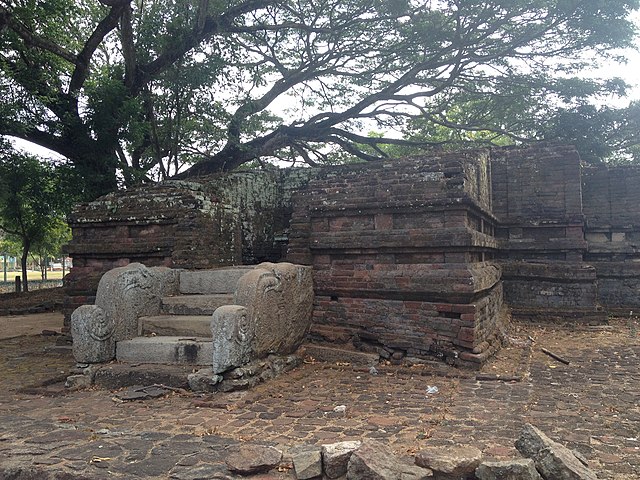
Paduwasnuwara, one of four cultural centers in the Wayamaba Cultural quadrangle is part of the Central Cultural Fund. The city's history dates back to the 12th century A.D. The history of the city dates back to the 12th Century A.D., when the Indian invaders took the Temple of the Tooth relic of the Yapahuwa Kingdom to India. It was King Parakramabahu who fought for it and brought the relic to Sri Lanka. His temporary kingdom was established in Panduwasnuwara, which was built around the 12th Century. Surrounding the Panduwasnuwara site are ruins and buildings covering more than 20 hectares.

Athugalpura (Kurunegala), became Sri Lanka's main kingdom after Yapahuwa Kingdom. King Bhuvanekabahu | founded the kingdom of Athugalpura (1393-1302 AD). It flourished under Parakramabahu IV's reign (11302 - 1326 AD). This period is home to many fine examples of Sri Lankan literature. The rapid urbanization of the region has left little evidence of the old walls that were built around the ancient city of Athugalpura, as well as the ruins of the Royal Palace, the Temple of the Tooth, behind
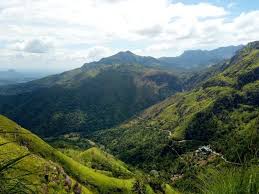
According to current administrative demarcations, Moneragala was part of the Uva Province. It had been a major area of the Rohana Kingdom in the past. This is supported by historical sources. This heritage zone contains many significant factors that are representative of the pre-historic period in Sri Lanka. Through excavations in Nilgala cave, a human skull was found as well as the skeletal remains of a dog and a fox. This heritage zone contains Kataragama and Yudaganawa as well as Maligawila and Galabedda in Randeniwala. These are significant for several historical events that occurred in Sri Lankan History. Buttala, Dematamal Vihara, Yudaganawa, Etimale, etc. These are crucial for incidents relating to Dutugemunu or Saddhatissa Brothers. This area, which is now known as Vellassa, was established by Prince Saddhatissa to cultivate approximately one hundred thousand (lassa), paddy fields (vel). King Valagamba, who fled Anuradhapura’s aggressions, received substantial assistance from Moneragala. This included the Rohana kingdom to provide security and mobilize military forces. Moneragla is well-known for the many incidents involving kings from Kandyan kingdom, viharas, Tampita Viharas, and paintings. These are scattered throughout this heritage zone. The existence of inscriptions at Gadaladeniya (and Nathe Devala) confirms that there were many people in Uva who fought against the aggressors. The Portuguese were defeated in a huge battle at Randeniya, under Rajasinghe 2. Constantine de Sa, the Portuguese leader, was Killed. The notable contribution of Moneragala to the Kandyan rebellion of 1818 was significant. Keppettipola and Butewe Rala, Kohukumbure Rate Rala and others could be identified as individuals who lived in this region.

The northern portion of Sri Lanka is represented by the Jaffna Peninsula. Archaeological research has confirmed that human activity was present in this area in pre-historic times. Written records mention Jaffna peninsula for the first-time in connection to the second visit by the Buddha to Sri Lanka. Jambukolapatthana (Dambakola Patuna), was a port that made Jaffna famous in the historical period. The introduction of Buddhism in the country was made during the reign of King Devanampiyatissa. Arittha, along with other envoys, left the Dambukola Patuna to go to Asoka, the Maurya kingdom. Similar to this, Bhikkhu F-hsein (411-413 AC) also arrived in Sri Lanka via this port. Mahavamsa says that the Sri Maha Bodhi, along with 18 members of the guilds, arrived at this port when she was brought by Theri Singhamitta. Historisch, Uratota (or Kayts) port is one of the most important ports in Jaffna. With the submission of Sinhalese rulers to Pandyan aggressions towards the end of 13th century, the northern kingdom was elevated to supremacy. After the Magha invasions, it became even more dominant. Magha ruled for 21 Years, Chandrabanu invaded Sri Lanka 1245 and ruled over the Jaffna peninsula 18 years. It was then under Chola rule for another 77 years (993-1070 AC) Mekarasasekaran alias Sankili, who was elected to power in 1579, ruled Jaffna when the Portuguese consolidated their power over the Maritime Provinces. Sankili was declared a war criminal by the Portuguese. In 1618, the Portuguese contingent reached Jaffna and captured Jaffna. The Dutch had taken Jaffna's power by 1658. Their administration was conducted under three centers during the Dutch period, viz. Colombo Galle and Jaffna. The English seized power in Jaffna in 1795 and maintained Jaffna fort to be an administrative center. Many sites of historical significance to the Hindu and Buddhist colonial heritage are scattered throughout Jaffna. There are numerous islands that are located on the peninsula, and the archaeological heritage of those islands is also preserved
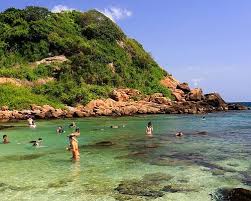
The Trincomalee city in the Eastern Province of Sri Lanka is the center of this heritage site. Archaeological evidence has shown that human activity was present in the area from pre-historic times to the colonial period. Recent archaeological research has shown that many caves formed by natural rock in this area were home to prehistoric humans. The area could be identified as a place where significant human activity took place due to two natural resources: the natural harbour at Trincomalee, and the copper sediment close Seruvila Both historical and archaeological sources confirm that Seruvila’s copper sediment was used locally and internationally from the fourth century BC to the twelfth centuries Archaeological research revealed places where copper mining was carried out, as well as copper smelting sites and furnaces. The Eastern section of the zone has an indented coastline. This means that several harbours, including the natural harbour, have been identified. Trincomalee harbour, also known as Gokanna Harbour in the past, is Sri Lanka's largest natural harbour. This harbour has been a trading centre between the East and West since the past and is protected from damage from the monsoon winds. It is a hollowed area with hills that gained prominence in trade activities. The harbour was also used to protect the Indian ocean from the west. The harbour was protected by a few forts. The Fort Fredrick, a Dutch fort now known as Fort Fredrick, is as important a security port today as it was back then. These ports are the end of the road network that was in operation in Sri Lanka since pre-Christian times. A mixed Buddhist-Hindu heritage is another notable fact in this heritage area It was a vital port during colonial times and came under the control western nations like the Dutch, French, and English. This is evident in Fort Fredrick. The Central Cultural Fund began heritage management in 2016 with Fort Frederick as its focal point. The Project's main objective is to preserve the archaeological heritage of the region, which was the subject of a civil war, and to make it available for the public.
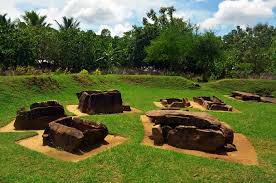
Ibbankatuwa can be found in Ibbankatuwa village, close to Sigiriya along the Kurunegala- Trincomalee major road. It is Sri Lanka's best-preserved proto-historic burial ground. The 13-hectare Ibbankatuwa Burial Site is home to stone cist burial graves from the Megalithic tradition. In 1970, Dr. Raja de Silva was the Archaeological Commissioner. This excavation was the first in the Ibbankatuwa Cemetery Site. In the second decade of the 1980s, a group of foreign and local institutions, including the Central Cultural Fund, the Post Graduate Institute of Archaeology and the KAVA (The Kommission fur Algemeine und Vergleichende Archaeologie of Germany) conducted excavations at the Ibbankatuwa Burial Site. They discovered 21 burial chambers. Radiocarbon dating of the charcoal on the site proved that it belonged to 600 B.C. The Central Cultural Fund conducted an investigation at the Ibbankatuwa Burial Site in 2015. The Central Cultural Fund conducted an investigation of the Ibbankatuwa Burial Site in 2015. It involved the excavation of a 10m x10m area, west of the 21-member cluster. After the earth was removed, the site revealed 47 additional burials. 26 of these were stone urns that contained the ashes of the deceased These burials consisted of chambers, some rectangular and some circular, constructed of simple granite slabs. Some chambers were covered with capstone and contained a variety of sizes of earthen containers, small and large, as well as ashes of the deceased. There were two types of earthen receptacles, one in red clay and one in black clay. They also contained metal implements made from copper and iron as well as beads made from a variety materials 21 of the 47 burials found from excavation were earthenware Urns that contained the ashes. These burials are known as Urn Burials. These Urns could be large or small, and were made from clay. Some had a cum bow/-shaped lid. These receptacles contained very few smaller containers The Ibbakatuwa burial ground is the largest in Sri Lanka. The burial site measures approximately 700m x 600m due to the extent of the cist tombs. The first combination of human settlements and a complementary burial site from the Early Iron Age was discovered in Polwatta. It is located just a few kilometers from the burial site

The Ratnapura district, which is located in the wet area of Sri Lanka, has archaeological evidence that ranges from the pre-historic to the historic era. This region was identified as a pre-historic area that has evidence up to the Pleistocene era. Bellanbendi pelesssa and Pelmadulla have been found to contain significant archaeological evidence from the Pleistocene era. Ratnapura has evidence dating back over 60,000 years to today on animal evolution, and evidence going back to more than 37,000 years to today about prehistoric Sri Lankan humans. Many Buddhist monasteries from the pre-historic period are found in this area, which is marked by mountainous terrain and wetzone environmental features. In 2016, the Central Cultural Fund began heritage management in Ratnapura district. It was centered on Sri Lanka's prehistoric heritage. This project aims to preserve such sites and make them available for the public to study and visit.

The Ritigala archaeological site is situated in an extraordinary environmental zone in the dry zone of Sri Lanka. Ritigala is located 40 kilometres away from Sigiri. It is a mountain range of approximately 750m in height, with diverse climatic conditions and biodiversity. This is the principal archaeological site. It contains a monastery complex that was built in accordance with the environment for meditation bhikkhus. Ritigala’s ruins are evidence of a full-fledged monastery complex that Sena | (831-851 AC) built. This has been confirmed in writing sources. This archaeological study has revealed the padhanaghara, where the meditating bhikkhus lived, and the janthaghara, where they bathed in hot water (saunabat), promenades. Toilets, toilets, and ponds. These architectural constrictions are well preserved at the moment. These are the most striking constructions: the stone slab promenades through thick jungle, and the padhanaghara made using natural environmental features. There are also caves where Bhikkhus once lived around the 3-2 century BC. In 2016, the Central Cultural Fund, under the Anuradhapura Mahavihara Project, began heritage management in Ritigala. The conservation of architectural monuments is ongoing and facilities are provided for tourists to see the site.

“The Jathika Namal Uyana", ‘the largest Na-forest mountain and pink quartz mountain in Asia’, is the "Jathika Namal Uyana”. Ven. Wanawasi Rahula Thero. Namal Uyana, a stunning and beautiful natural wonder with exceptional natural depths, has a rich history that spans more than a thousand years Archeological research has shown that the history of pink quartz found in this historic location is more than 550 million years. This special place, "Jathika Namal Uyan: 7km from Madatugama junction on the Colombo-Anuradhapura highway. To Adiyagala. at Galkiriyagama in Sri Lanka. The NA Tree is an invaluable resource that pr First, itis the highest roze-quartz mountain in South Asia. The forest was also used as an old asylum, where many ironwood trees were planted. Namal Uyana, an archeological site that contains ruins of an ancient monastery dating back to the Anuradhapura period, is called Namal Uyana. According to legend, the forest was inhabited by Buddhist monks during the first period of Buddhism on the island. This occurred under the reigns of King Devanampiya Tissa (3rd century BC). The ruins of Purana Namal Sya’s stupa and an old Bodhigara (a classic tree temple) are both from the second millennium. King Dappula, who ruled in Anuradhapura during the 7th century, declared Namal Uyana a refuge. Anybody fleeing from enemies or criminal punishments legally ordered by the King was allowed to seek refuge in the remote forest of NamalUyana provided they respect the rule and jurisdiction established by the Buddhist monks who live there. Legend says that Namal Uyana's outlaws sought asylum from Namal Uyana and were transformed miraculously into Na trees. Na or Naa is the Sinhala name for ironwood. The asylum seekers may have been a key part in the development of this iron wood. The monks could have forced them to plant sacred trees and take care of them. Although they are hundreds of years old, the Na trees at Jathika Namal Uyanas today are almost certainly not from Anuradhapura. Ironwood planting appears to have continued into the medieval period. The forest's relatively orderly structure indicates that it was once home to a human plantation. The ironwood forest has been replanted and covers more than 100 hectares The iconic symbol of Sri Lanka's precious timber is ironwood (Mesua ferrrea). It is native to Sri Lanka and other countries such as India, Malaysia Myanmar, Thailand, Thailand, Indonesia, and Myanmar. Ironwood can be found in Nepal at elevations of up to 150m above the sea level. The highest altitudes of ironwood are around 400m. In Sri Lanka, the species’ density is the highest of all the tropical countries in Asia, it is also the most abundant. Ironwood is found primarily at the hillside foothills in Sri Lanka's hillcountry. The dry zone plains are not home to large numbers of Na trees. Namal Uyana is the only exception. This indicates the human activity described above. In Sri Lanka, the sacred Na tree is revered. Many Sinhalese Buddhists believe that Metteyya, also known as Maitreya or Maithri (in Sinhala) will attain enlightenment from the Na tree. This durable ironwood has been used for centuries in Sri Lanka's sacred architecture. It is used for Buddhist and Hindu shrines, as well as for churches and mosques. To ensure the future, it is still common to plant Na trees close to holy sites. The legend of Nama Uyana's large-scale, ancient Na tree planting is a source of some credence. Ironwood's leaf colors change over the year, but they do not change in the same way as other species. The colours are indicative of the tree's age. Older Naa trees have darker green leaves, while younger ones have reddish leaves In Sti Lanka's Ayurvedic medicine for bleeding, all parts of the Na tree are used, including roots, flowers, and leaves Jathika Namal Uyana is home to 102 species tropical plants. This includes 72 varieties of herbs used in Ayurvedic therapies. The availabilty of fresh water throughout Sri Lanka's year is one reason for this richness in species that would otherwise be rare in the dry zone. Although some springs provide water water only during the season, water flow from one permanent spring at rose quartz and flows into the forest in various directions. Jathika Namal Uyana is home to both wet and dry species. Namal Uyana forest is home to 75 species of ants, and all Sri Lankan species of snakes. Only one species of lizard is endemic.

The heritage site's centre is Batticaloa, a town in the Eastern Province of Sri Lanka. Batticaloa is a part of the area known as Digamadulla during the historical age. Digamadulla was country-supplying region for rice during the Anuradhapura period. Historical sources (Mahavamsa), confirm that King Saddhatissa (137-119 BC) made significant efforts to develop agriculture in the area. He also built many Buddhist stupas, and monasteries. The arrival of Arab traders around the 8th century AC has seen a significant increase in Muslim population. The Portuguese then take control of the area. It was the beginning of colonial activity in the region. This is how multi-religious archaeological treasures such as Buddhist, Hindu, Muslim, Catholic, and Muslim have been able to spread throughout the area. This heritage was also at risk due to the civil wars that raged for 30 years. The Central Cultural Fund, whose headquarters is at the Batticaloa Dutch Fort, began heritage management in the area in 2017 Ampara On the East side of Sri Lanka is the heritage zone Ampara, or Digamadulla. This area has been home to human activities since the Middle Stone Age. Natural stone caves can be found in abundance. The Rohana Kingdom administered this area when Anuradhapura kingdom was in trouble. Historical evidence also confirms that the region was a stronghold for rulers who had to deal with enemy aggression. Archeological evidence has shown that this area was the location of Buddhist monasteries built after Sri Lanka introduced Buddhism. These monasteries were found in close proximity to hills and the coast. Currently, the area is home to Sinhaleses, Hindus and Muslims. The Central Cultural Fund started archaeological heritage management in the zone in 2017. Its goal is to study the archaeological sites that were damaged during wartime and later and provide the public with opportunities to see them